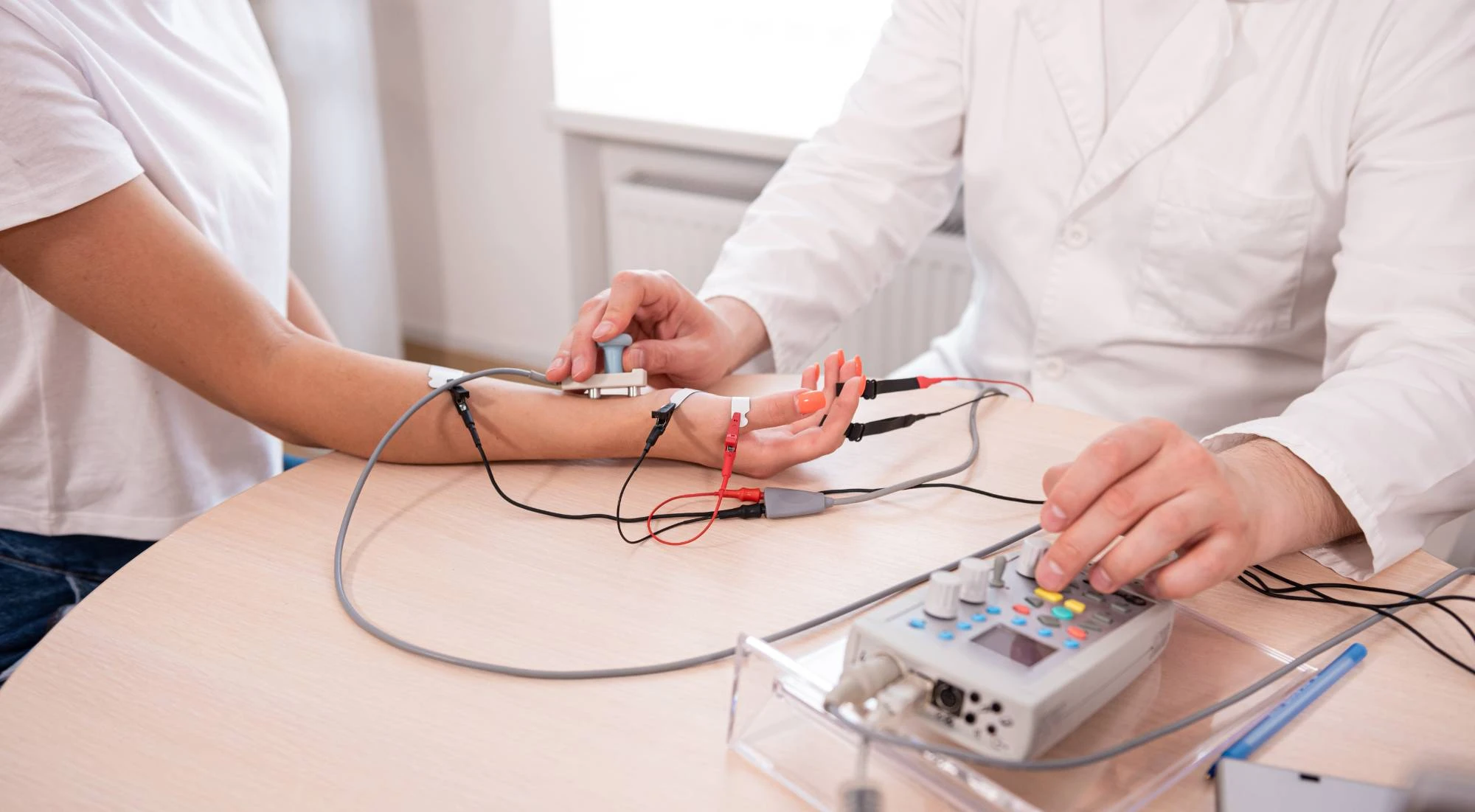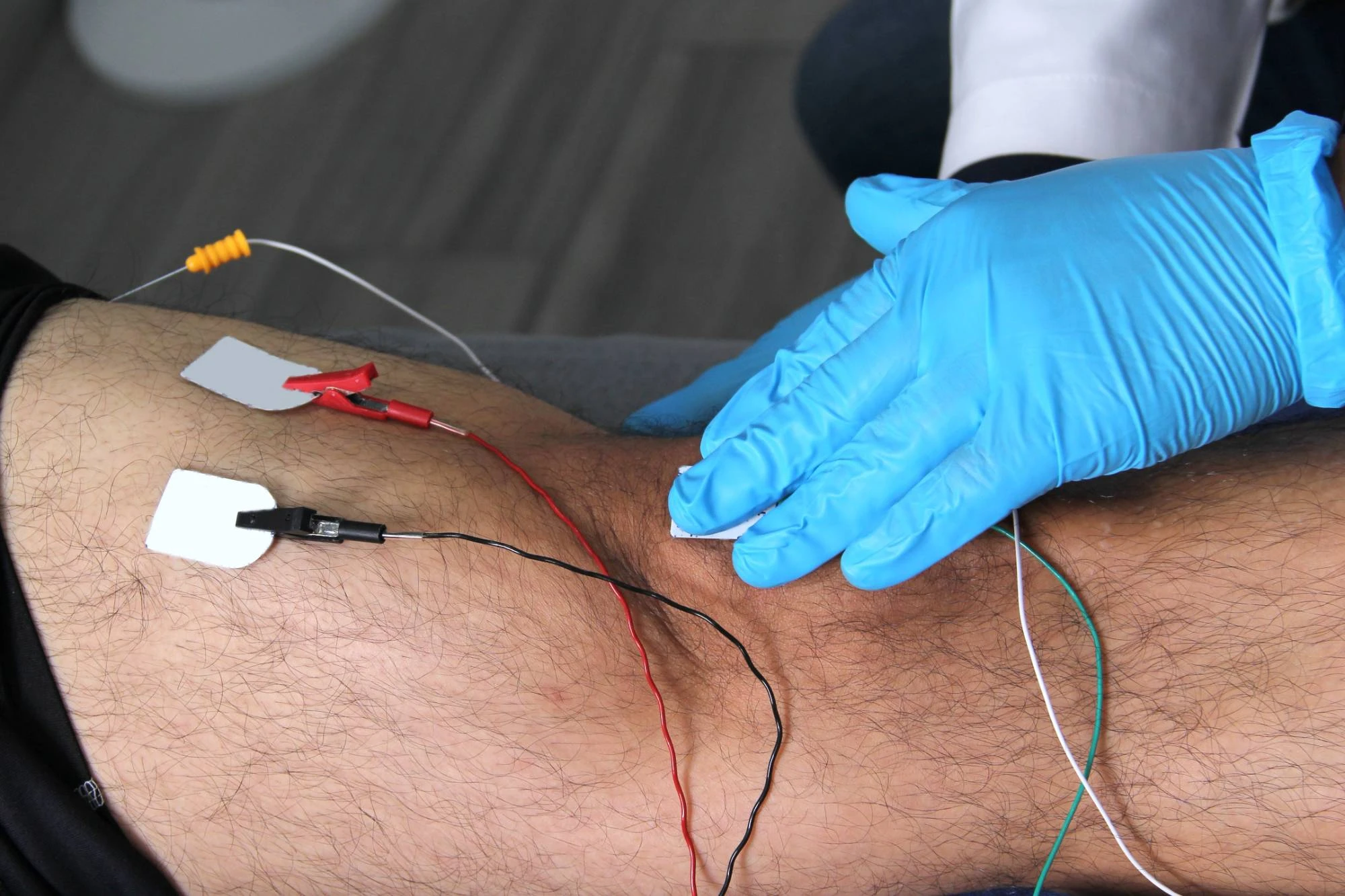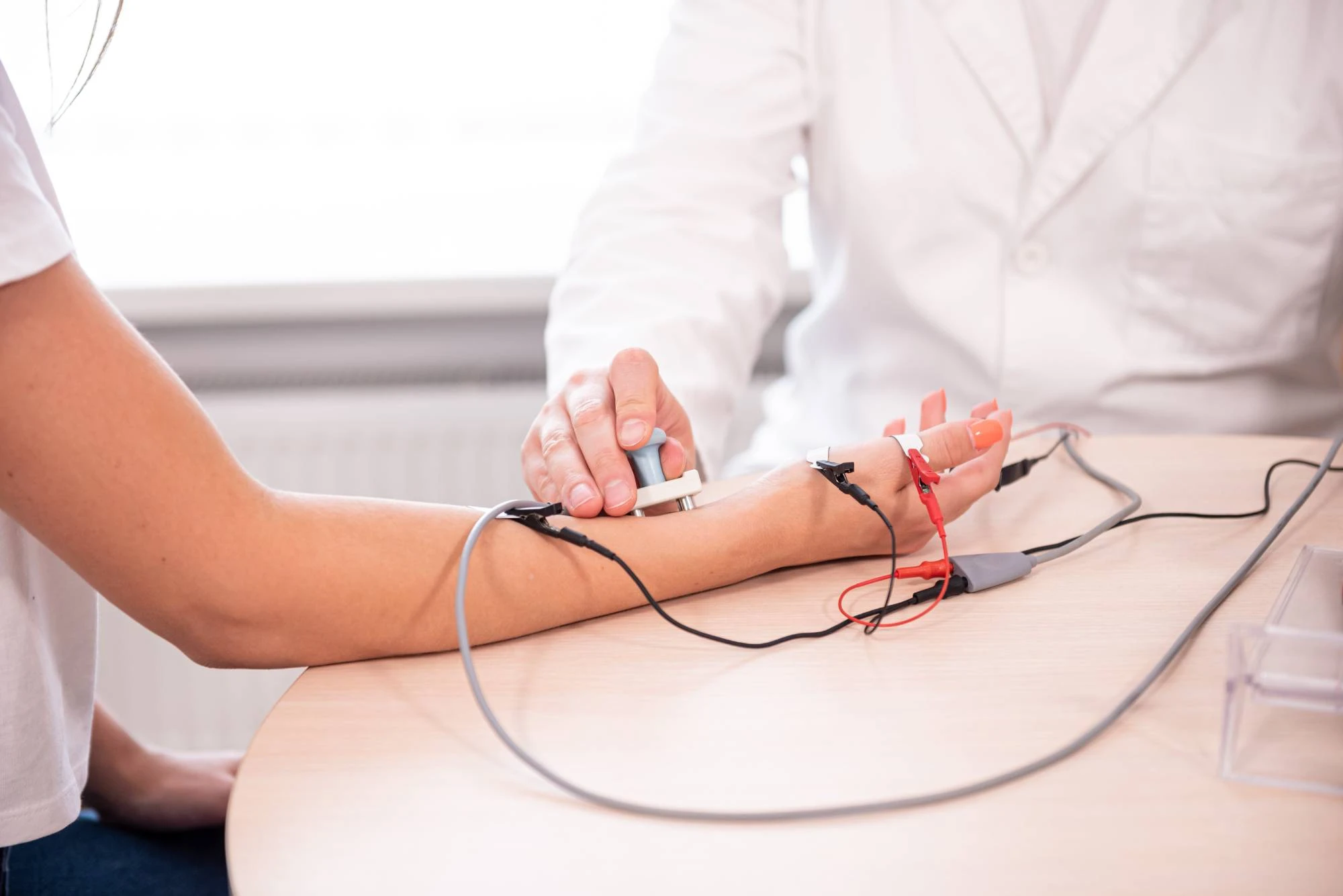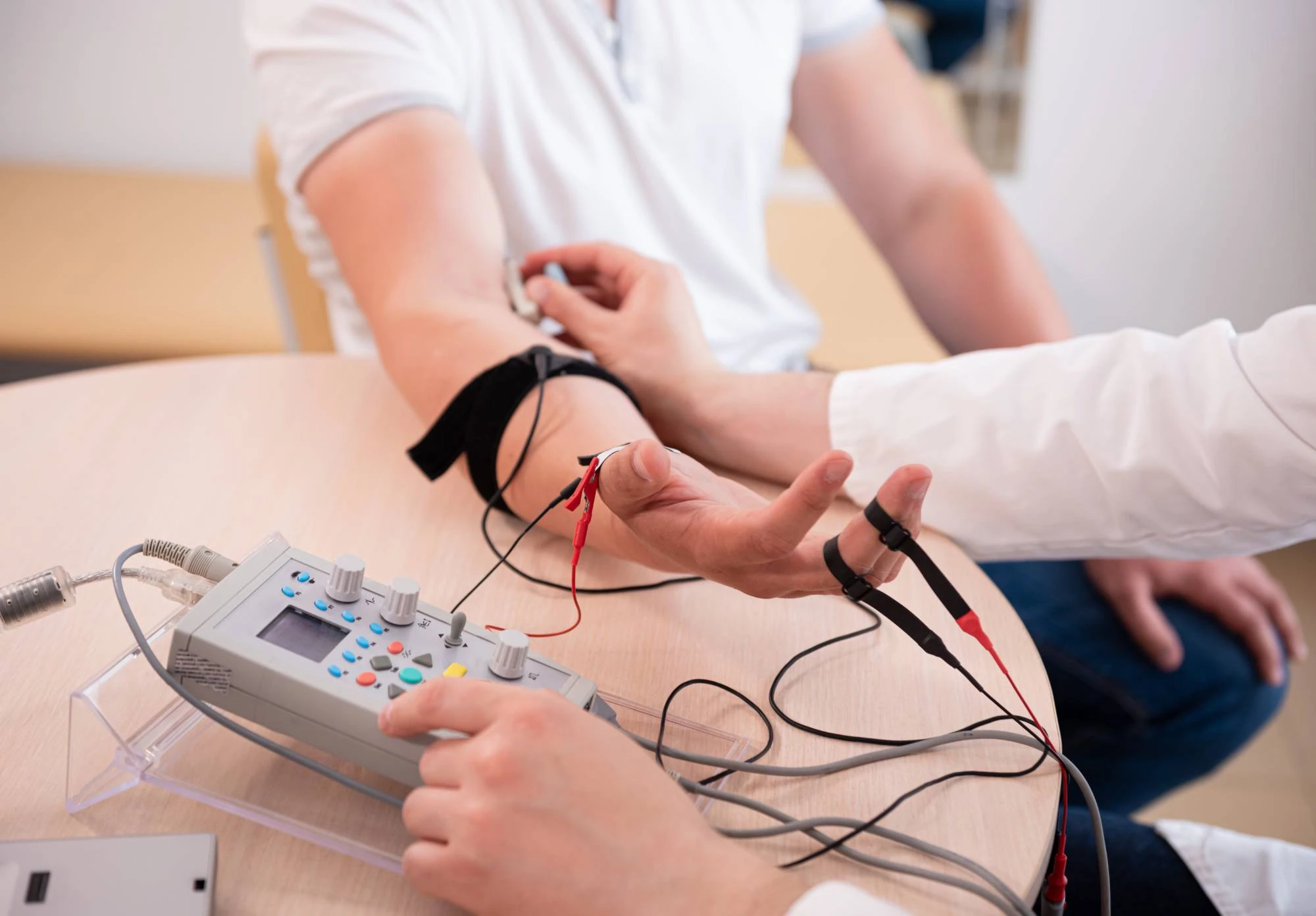Stop wondering what’s causing your numbness, tingling, or muscle weakness—EMG testing provides the precise diagnosis you need.

Reviews

You’ve been dealing with symptoms that don’t make sense. Your hand goes numb at night. Your leg tingles when you sit too long. Your muscles feel weak, but no one can tell you why.
EMG testing changes that. This diagnostic procedure measures the electrical activity in your muscles and nerves, giving us a clear picture of what’s happening inside your body. Instead of guessing about your condition, we get definitive answers.
When the test is complete, you’ll understand exactly which nerves or muscles are affected, how severe the problem is, and what treatment options will actually work for your specific situation. No more uncertainty—just a clear path forward.
NY Spine Medicine has been serving patients throughout central New Jersey with advanced diagnostic services and specialized spine care. We focus specifically on conditions affecting the spine, nerves, and muscles—which means we see cases like yours every single day.
Our team includes board-certified physicians who have performed thousands of EMG tests and nerve conduction studies. We understand how to conduct these procedures with minimal discomfort while ensuring accurate, reliable results.
Located conveniently in Westfield, we serve patients from across Union County and surrounding areas who need expert diagnostic care close to home.

Your EMG testing appointment typically takes 30-60 minutes and involves two main components. First, the nerve conduction study uses small electrical pulses to test how well your nerves transmit signals. You’ll feel brief, mild electrical sensations—similar to static electricity—but nothing painful.
Next comes the electromyography portion, where a thin needle electrode is inserted into specific muscles to measure their electrical activity. The needle is much thinner than those used for blood draws, and most patients describe the sensation as similar to acupuncture.
Throughout the test, you’ll see and hear your nerve and muscle activity displayed on a monitor. We explain what we’re finding in real time, so you understand what’s happening. Once complete, you’ll receive a detailed explanation of the results and what they mean for your treatment options.

Ready to get started?
Your EMG testing includes both electromyography and nerve conduction studies in a single appointment. This comprehensive approach tests multiple aspects of your nervous system function, ensuring nothing gets missed.
The evaluation covers the specific areas where you’re experiencing symptoms, whether that’s your hands and arms for suspected carpal tunnel syndrome, your legs for possible sciatica, or other muscle groups showing weakness or pain. Each test is customized based on your particular symptoms and medical history.
You’ll receive detailed results immediately after the procedure, along with a clear explanation of what the findings mean. We’ll discuss how these results connect to your symptoms and outline the most effective treatment approaches for your specific condition.

New York:
Florida:
Support